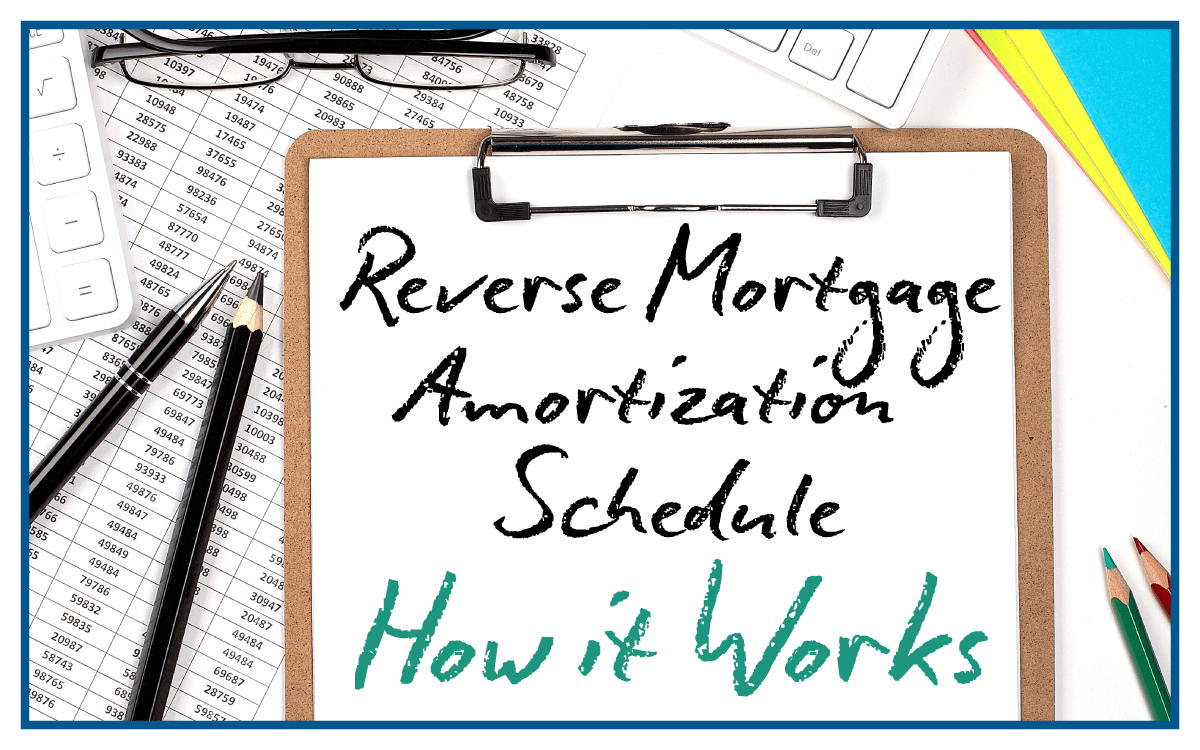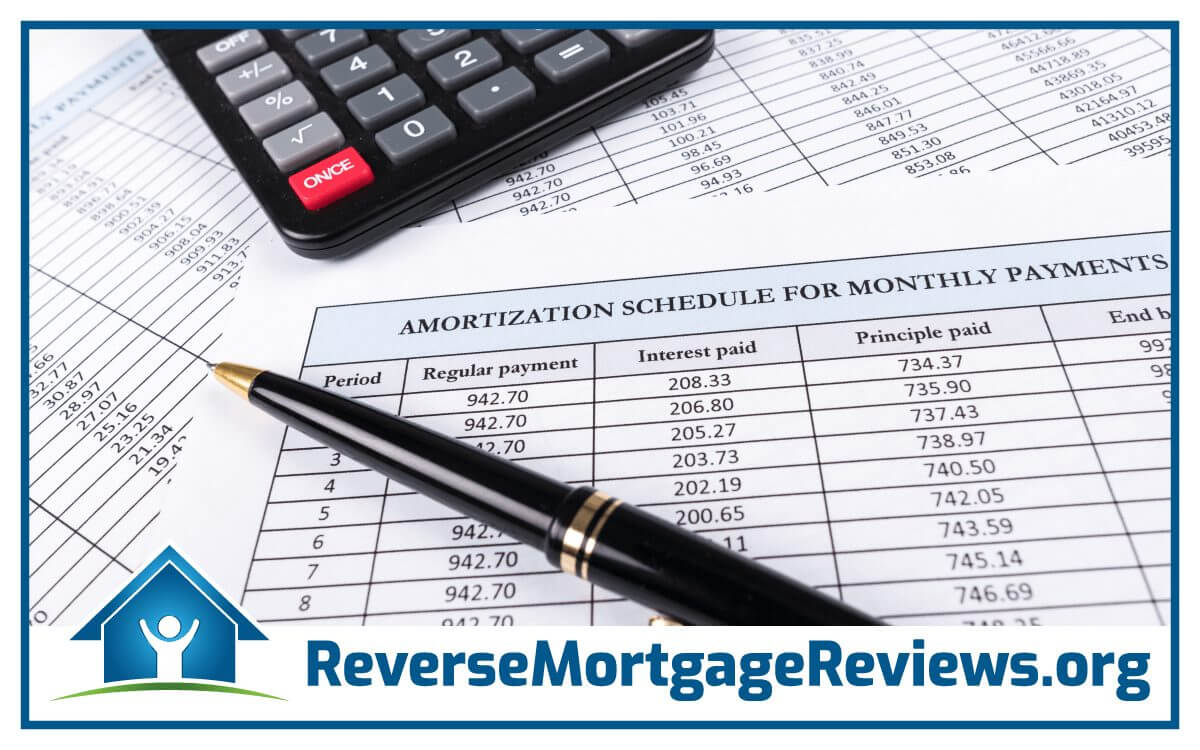How Does a Reverse Mortgage Amortization Schedule Work?
Mike Branson Jr. – Author
Mike Branson Jr. has 25 years of experience in the mortgage banking industry. He has devoted the past 19 years to reverse mortgages exclusively. Mike has worked in several aspects of the Mortgage industry, including Loan Origination, Underwriting, and Management.If you have ever had a traditional “forward” mortgage, chances are, you’ve seen an amortization schedule that provides the details of your loan over time. This schedule is a detailed summary of all the payments that are owed toward principal and interest over the course of the loan, monthly.
Because most mortgages are structured such that the borrower’s loan balance falls over time as interest and principal payments are made, an amortization schedule typically shows the balance ball each month until the end of the loan term.
For a reverse mortgage, the amortization schedule shows the same monthly components, including principal, interest, and loan balance, but because this type of loan is negatively amortizing, the borrower will see the loan balance rise over time. This is because the borrower receives payments rather than making payments toward the loan’s principal.
A reverse mortgage amortization can be a very helpful tool for existing or prospective borrowers to gain a complete picture of how the loan works overtime.
In this article, you will learn:
- The main elements of a reverse mortgage amortization schedule
- How a reverse mortgage amortization schedule differs from a forward amortization schedule
- How to use a reverse mortgage calculator
- Where to learn more
Inside the reverse mortgage amortization schedule: what it includes

An amortization schedule includes a few main components:
- The year
- Interest rate ? the interest rate will either be fixed or adjustable, depending on the terms of the loan
- Interest accrued ? this is the total amount of interest that is owed to the lender
- Loan balance ? this is the total balance that is owed to the lender. If the borrower does not make optional payments, this balance will grow over time.
- Home equity ? many reverse mortgage amortization tables will include a column for home equity; this value typically grows at an assumed average rate over time.
The amortization schedule can be created based on a few inputs and assumptions, including the borrower’s estimated home value, the borrower’s age, and the current interest rates. It can then be used to show how the reverse mortgage balance will look over time.
Because reverse mortgages also allow the borrower to draw funds from the home equity via payments, a lump sum, or a line of credit, this may be factored into the amortization schedule as well, so that the borrower can get a sense of the loan balance after those draws or payments to the borrower are made.
How the reverse mortgage amortization schedule works ? and how it’s different from a forward schedule

While the loan balance falls in accordance with the borrower’s monthly loan payments in a typical forward mortgage scenario, the opposite happens in a reverse mortgage, which is negatively amortizing. This means that the loan balance actually grows over time.
For Home Equity Conversion Mortgages, which comprise most reverse mortgages, borrowers pay mortgage insurance for that guarantees certain protections for the borrowers, including the certainty that the borrower will never have to repay more than the home is worth at the time of sale. While the amortization schedule may show a significant loan balance over the life of the loan, it’s important to remember that even if the balance exceeds the home value at some point in the future, the borrower is protected from owing more than the home is worth.
The amortization schedule essentially is the product of a simple reverse mortgage calculator that takes several inputs and projects loan scenarios based on varying assumptions. The amortization schedule is an important part of the reverse mortgage loan process and borrowers should review the amortization schedule with their loan originator.
The amortization schedule can also reflect different options the borrower may want to take, such as accessing a line of credit, taking a lump sum payment, and may also project different scenarios based on home value assumptions, interest rate changes, payment options, and other variables.
It’s important to note that a traditional “forward” mortgage is an amortized loan. This means that the borrower makes payments toward the loan balance that reduce that balance over time. This is contrary to a reverse mortgage scenario where the borrower receives payments, and the loan balance grows over time. In a forward amortization schedule, the borrower will see the balance fall each month. In a reverse mortgage amortization schedule, the borrower will see the balance rise.
Additional resource: https://www.advisoryhq.com/articles/reverse-mortgage-calculator-guide/
How to use a reverse mortgage calculator
A reverse mortgage calculator is an important part of the research process for any borrowers considering a reverse mortgage. The calculator will ask for several simple pieces of information to determine roughly how much can be borrowed and how the loan will look over time.
This information includes:
- The age of the borrower, or borrowers, in the case of a married couple
- The estimated home value
- The current interest rate
- Any existing mortgage balance
A reverse mortgage calculator can then project an estimated loan amount based on these assumptions.
Using the calculator, prospective borrowers can also see the effect of making optional payments over time. While these payments are not required, some borrowers opt to make these payments to maintain their home equity over time.
Summary
When researching a reverse mortgage, it’s important to speak to your family and trusted financial advisor to weigh both the pros and cons. Learn more about how a HECM loan might be right for you by contacting one of our top reverse mortgage lenders
|
No Comments on “How Does a Reverse Mortgage Amortization Schedule Work?”
|

